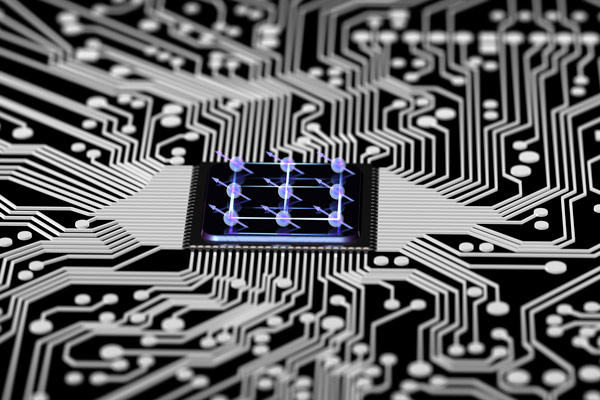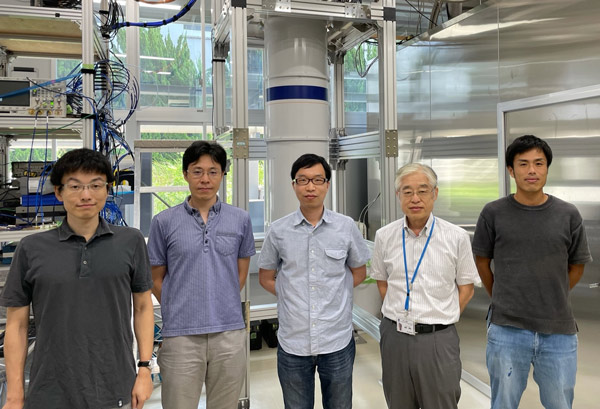Aug. 30, 2023 Research Highlight Physics / Astronomy
Feedback system could help to correct errors in quantum computers
Quantum circuit can reset quantum bits carried by electron spins in silicon
A method to reset the data held in silicon-based, quantum-computing devices has been developed by RIKEN researchers1. This could help to enhance the reliability of quantum computers by forming a crucial part of an error-correction system.
Quantum computers promise to dramatically increase our computing power, but these highly sensitive devices are prone to errors.
Data in quantum computers is encoded by the quantum states of particles, such as the spin of an electron. These quantum bits (qubits) can be linked together through a phenomenon called entanglement, and then process information through a combination, or superposition, of their quantum states. This enables quantum computers to perform certain complex calculations much more rapidly than conventional computers.
Electrical confinement in silicon formed by metallic electrodes, known as quantum dots, is a promising candidate to host an electron-spin qubit. But quantum states can be delicate, and the qubits often acquire errors that need to be corrected.
To help address this problem, RIKEN researchers have devised a way to rapidly and accurately read a spin qubit, and then reset it. This kind of control system will be essential to build fault-tolerant quantum computers based on silicon quantum dots.

Conceptual illustration of a computer microchip with a grid of quantum spin states. RIKEN researchers have shown how a quantum circuit can reset quantum bits carried by electron spins in silicon. © ELLA MARU STUDIO/SCIENCE PHOTO LIBRARY
One challenge the team faced is that a qubit loses correlation between the readout result and the qubit state after reading. To overcome this, the team used a pair of silicon quantum dots to accommodate two entangled qubits. While one qubit carried data, the other served as an auxiliary. By using a charge sensor to read the auxiliary qubit, the researchers could estimate the state of the data qubit without destroying its information—a method known as a quantum non-demolition (QND) measurement. Depending on the outcome of the measurement, the system could then deliver a microwave pulse that reset the data qubit.
The team constructed a quantum circuit to repeatedly perform the QND measurements, producing a single microwave pulse to reset the data qubit with cumulatively improved reliability. “Since the quantity measured by a quantum non-demolition measurement is not disturbed by the measurement, it can be measured again and again to estimate the data-qubit state more accurately,” says Takashi Kobayashi of the RIKEN Center for Quantum Computing.
The whole reset process currently takes about 60 microseconds at least, which might be too slow for a practical quantum computer. To shorten this time, the researchers suggest adding a second auxiliary qubit, which would allow them to use a faster measurement method.
“The time for the protocol might be reduced to a few microseconds,” says Kobayashi. “This would pave the way to feedback-based quantum error correction.”

Takashi Kobayashi (far left) and his co-workers have developed a method to measure and reset the data held in silicon-based quantum-computing devices, which could form a crucial part of an error-correction system.© 2023 RIKEN
Related contents
- Researchers demonstrate error correction in a silicon qubit system
- Two-electron qubit points the way to scaling up quantum computers
- Scientists succeed in measuring electron spin qubit without demolishing it
- Faster technique for resetting quantum circuits proposed
Rate this article
Reference
- 1. Kobayashi, T., Nakajima, T., Takeda, K., Noiri, A., Yoneda, J. & Tarucha, S. Feedback-based active reset of a spin qubit in silicon. npj Quantum Information 9, 52 (2023). doi: 10.1038/s41534-023-00719-3
